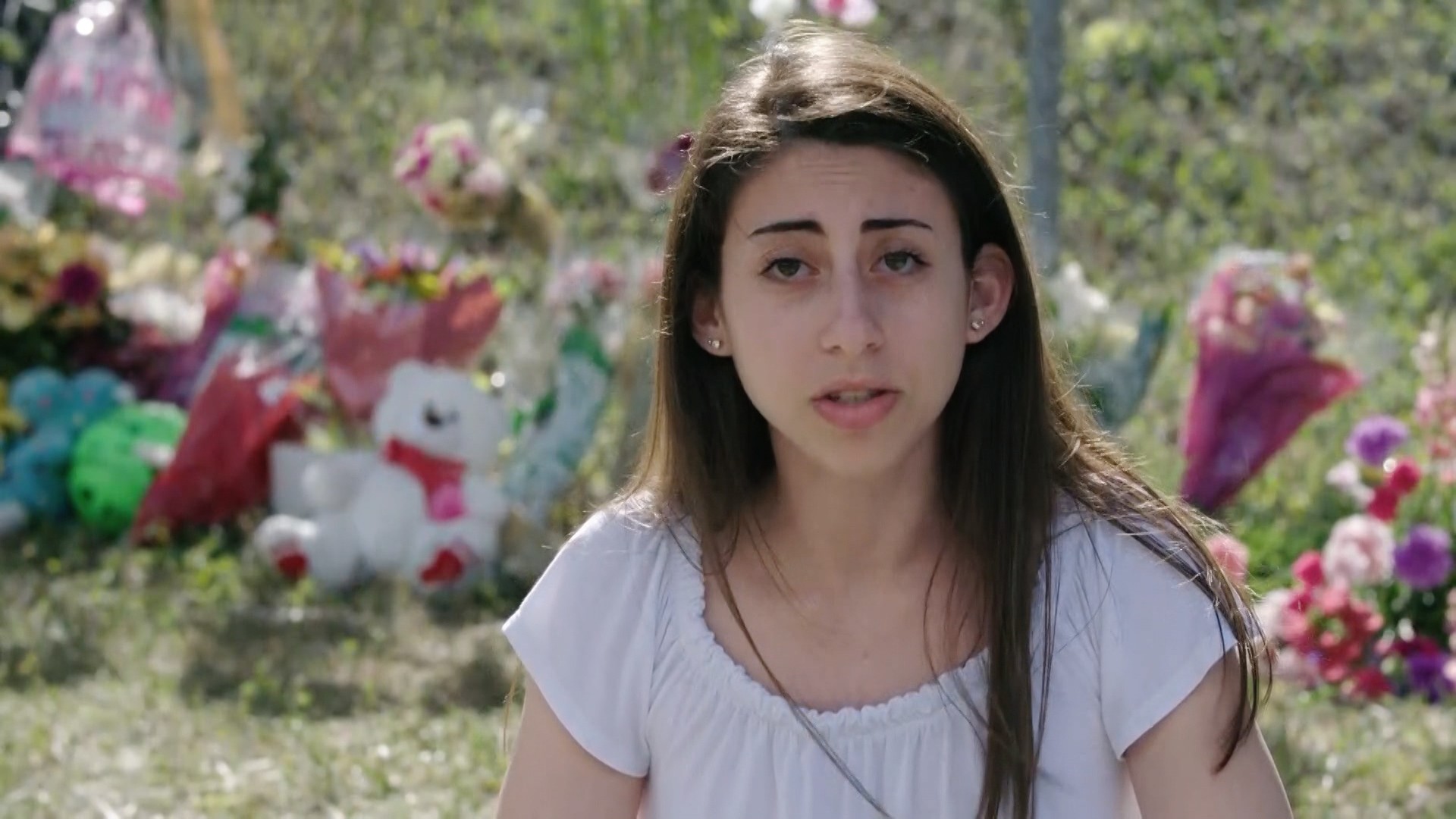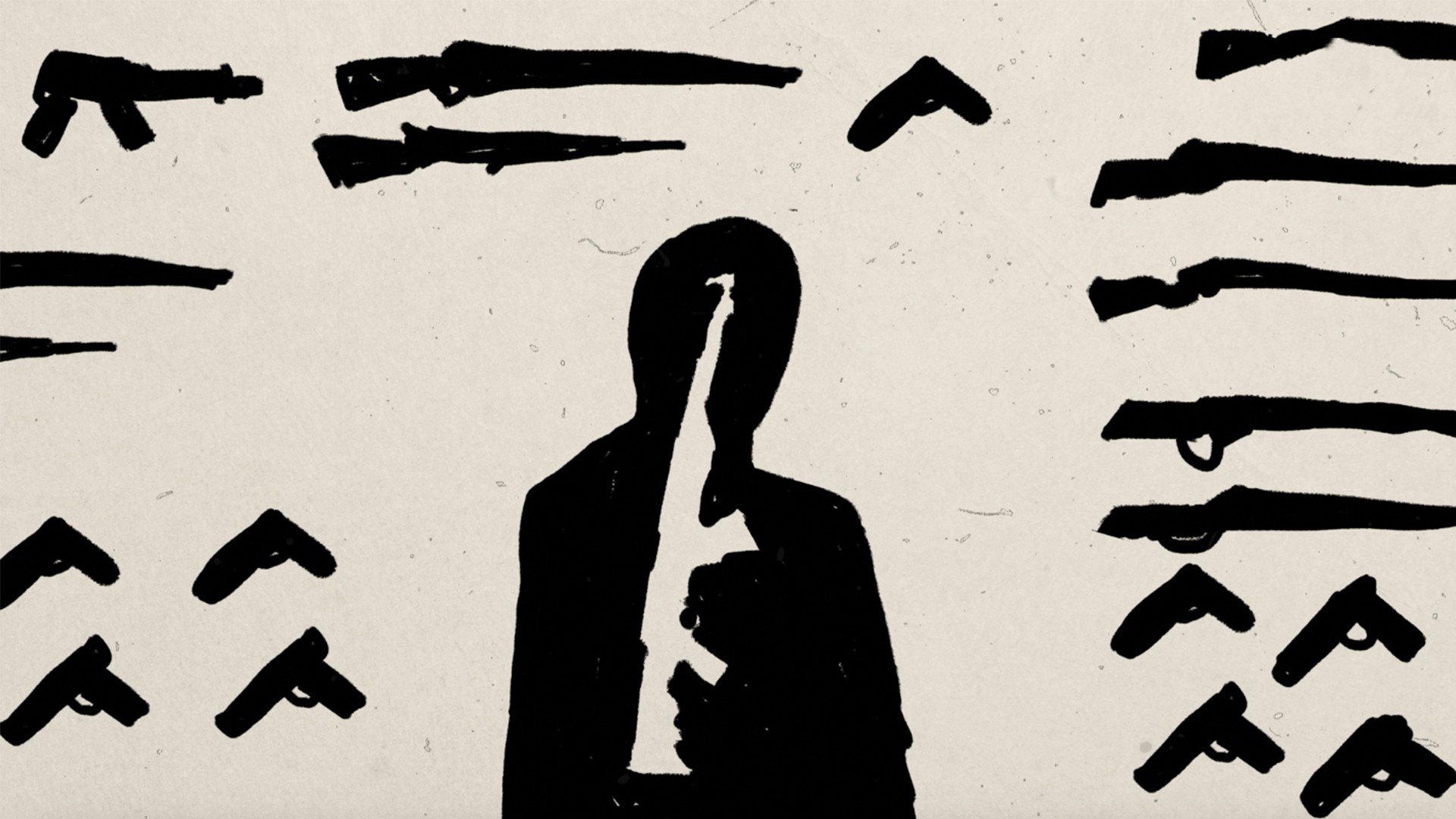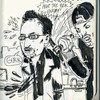
The shooter stalked around the circular hallway as alarm spread, first by shots and cries of “There’s a gunman!” and then by a building-wide intercom announcement: “This is an emergency. Stay in your office. Lock your doors. Do not leave. Do not go on the elevator. Do not go on the stairwell. We’ll get back to you.” The announcement repeated every five minutes as the building’s workers tried to make sense of the chaos around them.On the 26th floor, employees barricaded the door. On the 40th, they shoved a couch in front of the entrances. Meanwhile, some people kept working. Workers on the 24th, a Merrill Lynch office, were trapped in cubicles with no doors to lock. Emergency services began to converge on the financial district: helicopters, ambulances, a police tactical team. The streets were closed and strangely quiet, at least until crowds began to assemble on corners.
Inside, the gunman fired into an office, shattering glass and killing a lawyer. He took the stairs down to the 33rd floor, then lower, shooting as he progressed. One lawyer, 28-year-old John Scully, used his body to shield his wife Michelle; he died, while she survived with wounds to her chest and shoulder. The gunman went on to kill a law student, a legal secretary, an executive, and an assistant in another company. In all, eight people were murdered and six were injured.Relatives and friends of victims were talking about what they could do on gun control before the dead were buried.
Marjory Stoneman Douglas High School student Emma Gonzalez reacts during her speech at a rally for gun control at the Broward County Federal Courthouse in Fort Lauderdale, Florida on February 17, 2018. (Photo by RHONA WISE/AFP/Getty Images)
One of the first California Street victims was Jack Berman, a well-liked attorney who didn’t even work for Pettit and Martin. His wife, Carol Kingsley, didn’t know what happened to him until six hours after she learned about the shooting. “I had simultaneous radio and TV stations going on,” she told me over the phone from San Francisco. “So I understand the period of watching something unfold on TV not knowing what happened to, in my case, my husband.”
Grief turned into advocacy “immediately,” Kingsley told me. In the early morning hours after the shooting, Steve Sposato, whose 30-year-old wife, Jody, was among the victims, wrote a letter to President Bill Clinton condemning the weapons Ferri used. Relatives and friends of victims were talking about what they could do on gun control before the dead were buried—the rabbi conducting Berman’s service even asked Kingsley if he could address the subject in his remarks.Guns and the damage they are capable of inflicting had been on many Americans’ minds for a while by then. The early 90s were, in retrospect, a watershed moment in the history of the gun control movement—or the point at which a wave of advocacy crested, broke, and receded. In 1989, a horrific shooting at a Stockton, California, school left five children dead and sparked such outrage that the state passed a ban on assault weapons—the country’s first—months later. The bill defined “assault weapons” by listing specific models of guns, including Colt AR-15s and Intratec TEC-9s, the type of semiautomatic pistol Ferri used in San Francisco four years later. (He bought his guns in Nevada.)The early 90s were, in retrospect, a watershed moment in the history of the gun control movement—or the point at which a wave of advocacy crested, broke, and receded.

Those affected by the California Street shooting created a group called the Legal Community Against Violence (LCAV) immediately after the tragedy. Initially it was something of an ad hoc affair, a collection of lawyers and law-firm support staff who felt moved to activism by being “hit close to home,” as Kingsley put it. They met at the Bar Association of San Francisco and shared their first executive director with the already-formed Brady Center to Prevent Gun Violence. For a time, some of them worked out of 101 California Street itself.
Like the California Street families, the teen survivors of the Parkland shooting became activists overnight. They’ve since made passionate speeches in favor of gun control, they’ve confronted politicians all the way up to President Trump, and they’re planning a march on Washington. Advocates need to strike an emotional chord that breaks through the clutter. But as the gun debate of the 90s shows, the legislative process lags behind emotional appeals, and passing laws requires a great deal of grunt work and argument.The most contentious policy being pushed by activists back then was a ban on the sorts of guns Ferri used, weapons with high-capacity magazines and military-esque features that didn’t seem to serve any practical purpose. “Can any of you advise me how to tell a ten-month-old that mommy’s dead?” Steve Sposato asked the Senate Judiciary Committee during an August 1993 hearing, his daughter in a baby carrier on his back as he spoke. “Perhaps the manufacturer of the Intratec TEC-DC9 assault weapon should publish this information with the instruction manual for its murderous weapon.”
President Bill Clinton looks on as Bureau of Alcohol, Firearms and Tobacco Director John Magaw holds a AK-47 submachine gun at the White House in Washington on Monday, May 2, 1994. (AP Photo/Dennis Cook)
Then-Congressman Chuck Schumer of New York raising linked hands with US Senator Dianne Feinstein of California and Illinois Congressman Mel Reynolds after the House passed the assault-weapons ban in May 1994. Photo by Terry Ashe/The LIFE Images Collection/Getty Images)
Could the right things come together again? After Parkland, some Republicans, including Trump, indicated they might support raising the minimum age to buy firearms to 21. Brian Mast, a Republican congressman from Florida who is also a veteran, wrote in the New York Times that he would support an assault weapons ban, though, he conceded, “The exact definition of assault weapon will need to be determined.” A crop of relatively new gun control groups have appeared on the scene since the horrific 2012 elementary school shooting in Newtown, Connecticut, and many expert-backed gun reforms have widespread public approval.Still, the gun lobby remains incredibly powerful, and it was able to block even relatively mild legislation after Newtown. “I still can’t believe we did nothing after 20 first graders were slaughtered in their classroom,” said Feinstein, who has remained a strong voice for gun control in the Senate even as her standing in her party has waned. “Congress has refused to stand up to the NRA. That’s the bottom line.”Because of that dynamic, to really see the lasting impact of the California Street shooting, you have to look not at Congress but at the state of California. That’s where activists have spent years passing small reforms, often initially in progressive cities. “We passed regulations in dozens and dozens of cities first, which made it far easier to get that done at the state level,” Thomas recalled. Today, California has some of the strictest gun laws in the country, and while correlation is not causation, the state’s total annual firearm deaths have fallen even as the population has grown; though the gun death rate has dropped across the country in the last 20 years, it’s dropped more steeply in California.
“One law isn’t going to fix gun violence,” Thomas told me. Instead, she envisioned something like the safety regime that has grown up around cars. “We’re going to have to have [the equivalent of] better seat-belts, speed limits, speed bumps, banked curbs.” For an example of a modern regulation, she pointed to one recently enacted California state law restricting the sale of ammunition and requiring ammo purchasers to undergo background checks; it followed an earlier local law in Sacramento that let police track ammunition sales to find and arrest people who had guns despite being prohibited from owning them.Some states have gone the other way on guns, however, passing "Stand Your Ground” laws that broaden the situations where shooting someone in “self-defense” is legally permissible. Conservative lawmakers in many places have also expanded concealed-carry regulations—last year in Arkansas, the legislature made it legal to carry guns on college campuses even though students and faculty at the University of Arkansas opposed the measure. Federal gun laws remain lax. Today, it’s legal to buy the sort of gun Ferri used in his killing spree 25 years ago. You can buy a Hellfire trigger, too. (Many Republicans, including Trump, say they now support banning “bump stocks,” devices that perform a similar function and were used by the Vegas shooter.)The activism born from the California Street shooting did not succeed in getting rid of the weapons that make mass shootings especially deadly, at least not permanently. One of the hard lessons from that episode, and from Newtown, is that passionate advocacy is often not enough to force meaningful change on a national level.But another lesson from California Street is that public tragedies can create ripples and echoes that linger for decades—a quarter-century later, it remains a touchstone for many California gun-control activists. “Maybe it’s 98 percent horrible when [certain] events happen,” said Kingsley, “but there is that 2 percent of positive. And the positive with this increased frequency of these horrific shootings is it keeps the conversation going. It keeps it in the front of people’s minds.”Every summer, around the anniversary of the shooting, the Giffords Law Center holds a gala in San Francisco. Thomas told me that even though the venue tends to be a relatively small one, the event attracts hundreds of guests. “I think a big reason for that is the 101 California Street shooting still matters to people here. They haven’t forgotten. And they know we came out of that,” she said. “Even though I know a lot of people outside of California may not remember it or it may not be that big of a deal, here it still really matters to people. Most people who’ve been in this city a long time still tell me they walk by the building and think of it.”Follow Harry Cheadle on Twitter.But another lesson from California Street is that public tragedies can create ripples and echoes that linger for decades.
